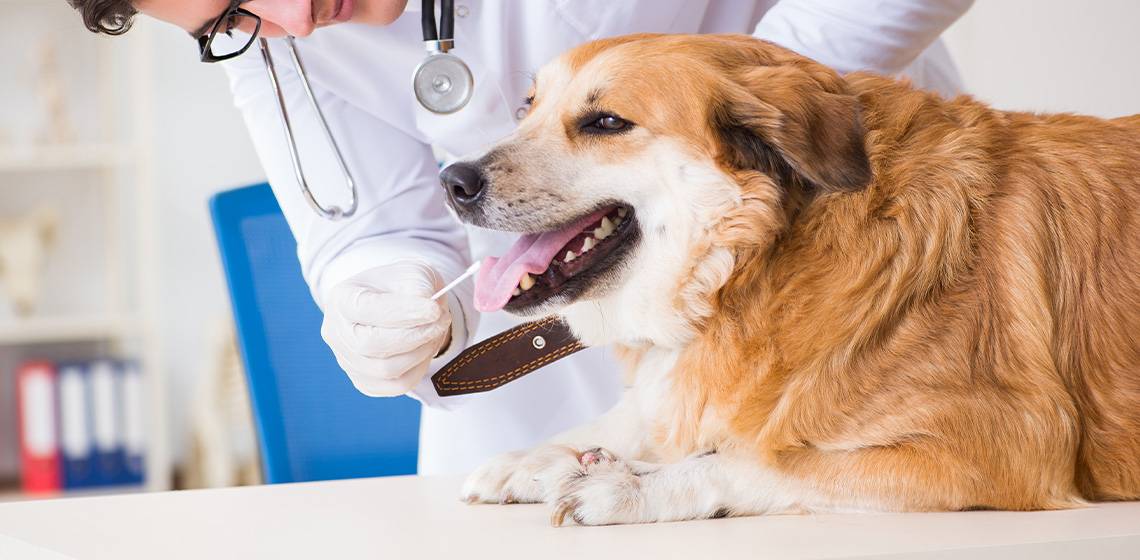Monkeypox is a viral infection that causes illness in humans, primates, rodents, and rabbits. Although there are no reported cases in cats or dogs, the possibility of transmission cannot be ruled out altogether.
Severity:
Moderate in humans
Table of Contents
Key points
- Monkeypox belongs to the Orthopoxvirus family of viruses, which also includes Smallpox.
- In humans, as well as skin lesions, Monkeypox causes headaches, fever, muscle aches, and enlarged lymph nodes.
- The disease is spread through contact with bodily fluids or sores, including contaminated materials in the environment.
- There is no specific treatment for the Monkeypox virus, only supportive care.
- Smallpox vaccinations can also protect against Monkeypox.
Common in
Most human cases are in Africa. However, there are cases elsewhere, including in the United States and the United Kingdom. Primates, rabbits, and rodents can also be affected.
Symptoms & types
The symptoms of Monkeypox in humans are similar to Smallpox. Thankfully, though, they’re milder. Monkeypox causes a pustular skin rash, with lesions starting as raised red lumps and becoming blisters or pus-filled spots. These lesions occur mainly on the face, especially the eyes, as well as the hands and genitals. Like the chickenpox rash, the skin lesions scab over and heal over time. Alongside the rash, Monkeypox also causes flu-like symptoms, including fever, headaches, muscle aches, and chills. You’re also likely to get enlarged lymph nodes if you are infected, so you may notice swellings in your neck, armpit, or groin.
So, what about animals? What symptoms do they show? Well, signs of Monkeypox in animals are pretty similar to human symptoms. However, in addition to fever and rash, they may also get a cough and conjunctivitis. Some animals carry viruses without showing signs of being unwell, and it’s not clear yet which animals can carry or become infected by the monkeypox virus. Thankfully, there’s no evidence at the moment to suggest that cats and dogs get Monkeypox, and there have been no confirmed cases. However, cats and dogs are susceptible to other viruses from the same family, so it’s possible that they could get Monkeypox too.
Before you start to panic because your dog’s eyes look sore or they have some odd skin lesions, you should read this article about eye allergies in dogs, and this article with lots of information about dog skin complaints. Many causes could explain symptoms similar to Monkeypox, so try not to worry and seek reassurance from a vet if you’re concerned.
Signs of Monkeypox in animals are pretty similar to human symptoms.
Understanding the diagnostics
If Monkeypox is suspected in a human or animal, a swab can be taken from one of the skin lesions or the conjunctiva of the eye. A PCR test can be run on the swab sample in order to detect the monkeypox virus.
A PCR test can be run on the swab sample in order to detect the monkeypox virus.
Learning About The Causes
Monkeypox is caused by a virus belonging to the orthopoxvirus family. Other viruses from this category include Smallpox, horsepox, cowpox, and camelpox. The disease spreads through contact with bodily fluids or skin lesions of infected individuals. Of course, any surface, material, or object contaminated with infected bodily fluids could also contribute to the spread of the disease. The current monkeypox outbreak originated in Africa, but there are now cases throughout Europe and North America.
The disease spreads through contact with bodily fluids or skin lesions of infected individuals.
Best Treatment Options
There is no specific treatment for Monkeypox. Like many other viruses, supportive treatment is given to relieve symptoms while the immune system fights the infection. However, the smallpox vaccination has been shown to be effective against Monkeypox. It may play a part in controlling this outbreak and protecting people from becoming infected.
Smallpox vaccination has been shown to be effective against Monkeypox.
Summary
When the world is still recovering from the uncertainty and worry of the COVID-19 pandemic, it’s easy to understand why people have so many questions about Monkeypox. Everyone wants to keep themselves and their loved ones safe, including their furry family members. Thankfully, although this virus and its true prevalence are not fully understood, the risk to our cats and dogs seems minimal. However, if you have a rabbit or other small furries, you must remain vigilant and speak to your veterinarian if you have any concerns.
FAQ
The symptoms of Monkeypox in humans are a skin rash, enlarged lymph nodes, and flu symptoms like exhaustion, fever, chills, and muscle aches. Animals may also get these symptoms; however, they might also develop conjunctivitis, a cough, or other signs of respiratory disease. It’s also possible that animals could carry the monkeypox virus without showing signs of illness.
In some areas of Africa, up to one in ten people infected with Monkeypox have died. Thankfully, in developed countries in Europe and North America, symptoms have been generally mild, with no fatalities.
Monkeypox causes skin lesions that change over time, similar to chickenpox. The lesions begin as red bumps before becoming blisters or pustules and bursting. Eventually, the lesions scab over. Contact with the blisters, pustules, or bodily fluids of an infected person or animal could lead to transmission of the infection. Animals can also transmit the virus through bites or scratches.








